Revisiting the nativity of invasives
and the forever inventions of perpetual creativity
Re-posting words I wrote about one year ago, as I watch the beautiful, invasive white flowers bloom, once again, like expected visitations from the stars. I don’t have answers, exactly, but I feel validated in the questions I asked then. I enjoyed reading it again and hope you do too.
Since then, Banu Subramaniam happened, with her Botany of Empire1, Vanessa Machado de Oliveira with her Hospicing Modernity 2 happened, and so did the Thinking with Plant and Fungi Conference3 at the Center for the Study of World Religions at Harvard. Videos available on their Youtube channel.
(I started writing about invasive natives, and it is with surprise that something materialized, see below… Little did I know then that the November 1st New Moon in Scorpio had many meanings…no conclusions, lots to think about…seeds to chew for winter hibernation. In gratitude for my ability to still discern, to laugh and to write, and with thanks to you who is reading this...)
The original semi linear writing plan:
Natives vs invasives? - Invasives as natives, invasives hybridized to almost natives.
Coccia, the dismissal of plants – grafting as a metaphor – in search of new production?
Nativity - in defense of natives and why?
Invasives as healers of territory, homeopathy, mapping homeopathic medicine with a pendulum!
Dissolution of borders, bacterial world inside us, with no borders and no center?
The notion of hybrids and immigrants, naturalized… the beauty of Queen Anne’s lace.
In the architecture of Queen Ana’s Lace.
Dona Ana, my mother, would have celebrated her 99th (106th) birthday in July. In her last years, she remembered the butterflies she collected, as a child, with caterpillars lining up around her childhood bed frame, for sleep at night. Blessed be the old synchronicities aligned around us.
The language of invasion permeates all. From the past and from history, mostly…by choice of remembrance mode.4
Walking gingerly down the path, imagining limping all the way to the mailbox, down by the road. Bramble vines that house blackberries and mostly bees, catbirds and wrens. Then the frightening telltale of tiny white, purple and pink berries on a vine with leaves that look like grapes… First time ever here, in this paradise of invasive plants.
Guilty, for sure, at first – you are not a good caretaker! A few attempts to cut the berries off the vines but unable to reach the base, poison ivy, happiest as I have ever seen it, in this dry wet hot summer and fall. No long rubber boot will protect me, a brief time when I wished for once, to be tall, strong and ruthless.
Weeks go by, the roof leaks, the health insurance corporation no longer offers the same plan, a glimpse of hope soon crushed you may have been exempted from pre-existing, as if you could, as you age in a severely poisoned environment… or are we possibly in agreement we are ageing in poison?
Setting the stage for a conversation about nativity and invasion, a topic as juicy as a pomegranate, picked fresh red and ripe from the original native tree, seed by seed in acrid delicious foreign sweet.
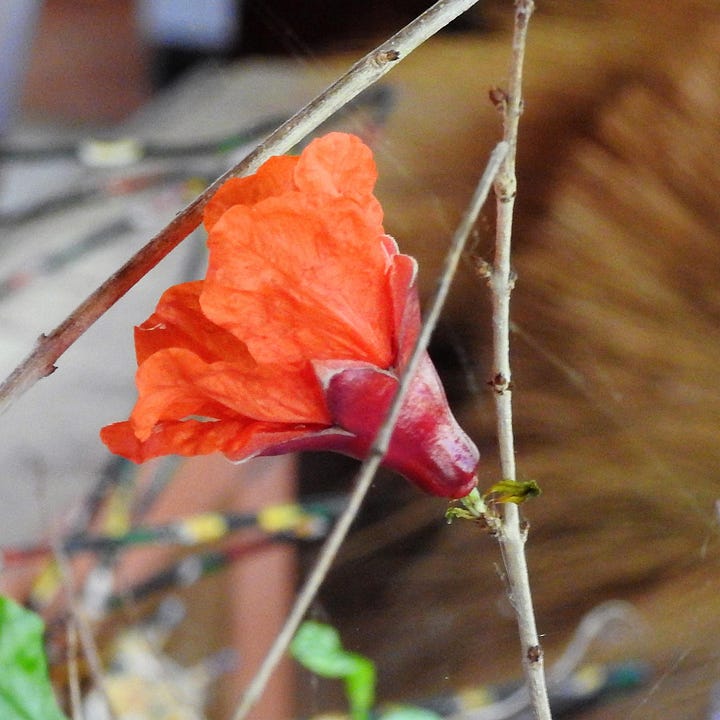
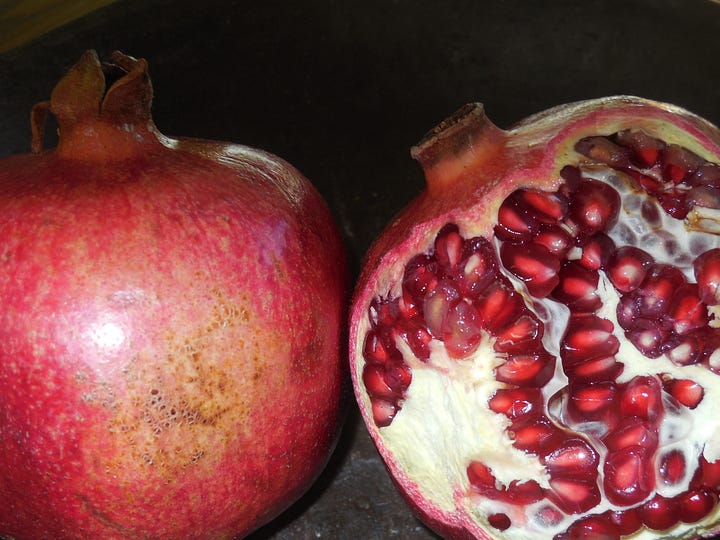
Or grapes that cost a fortune and I don’t care where they come from, just for the pleasure, I forget organic, go for size, taste and shape, proven previous merchant and merchandise value. I buy from farms with cozy names, like Meadow Valley and Happy Grove, I favor Chile, Costa Rica, sometimes California. I am thankful that I did not yet catch the virus of stern fundamentalism influencing my tribal illusions for my picks from the shelves.
Grapes do grow here, with more than sixty recognized native labels, and they are often hybridized with French grapes, for example, to improve their stock (sic). Most wine, I learned, is made from grafted vines. They are still an example of a perfectly sane nativity from elsewhere... Why can all nativity then not be safe?
The futuristic notion that mommy and daddy, gaia, earth and the global villages of the middle classes may not be sufficient in the languages of our future thoughts and doings. We come from disparate thoughts and feelings, … if analog in selves, let us then try analog… not either or.
As I write this, the cat, by the couch, intentionally frozen, in anticipation of the hunt, and a mouse with pointed ears, stare at both of us and disappears.
A half hour later, the cat sets in her attack pose once again and almost hisses. Then jumps back in retreat!
A black snake is inside my house and Tinha, the cat, does not think she is a friend, not a moving target, not a toy. I have a snake inside my house. She is thin still, almost 2ft long, so no longer a young snake, agile and now quiet somewhere. Here, in my house.
And I also have a mouse with pointed ears. Behind the couch, the books, both most likely spooked by the roofers…
To the first and immediate level of abstraction this is November 1st, a new moon in Scorpio… and I have a snake manifested in my home. 6
To the second level is to abstract further and identity, I guess, the need to separate and identify. And I say “is” with the clear intention and knowledge that this is yet another play with words that I love so much!
(Snake aside for now, as she is still here…and will be here until she leaves.)
A recent exchange of comments about my last post and words about borderlines that also lead me here:
Robert’s Substack - Maybe it's borders that produce identities. 7
Me/Author - Yes, I am thinking along similar lines. The friction of the crossing, the possibility of a new in vitro, and so, a new identity. Emanuelle Coccia talks about the need for the machine to produce grafted realities that no longer follow genealogical (patriarchal/matriarchal) lines because they come from disparate backgrounds. Much like all wine that is produced from grafted vines... Great new fun in feelings of inclusions!
Sit on the poison, take a minute or many, and learn from it…
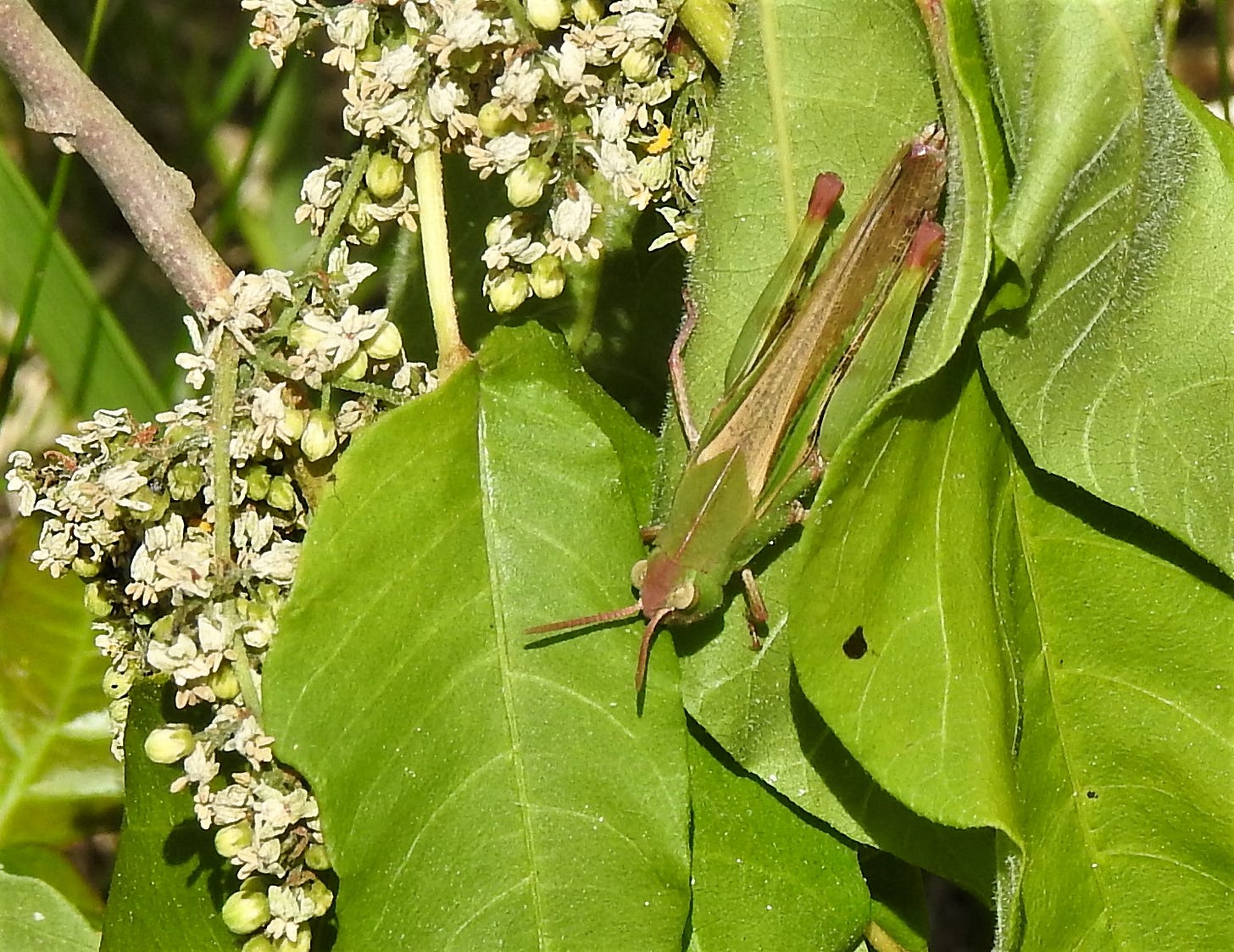
"Liberar la vida de su pasado", says Emanuele Coccia, "free life from its past" as in grafting or adoption.
Sowing more dissenting creative discourse, this time in art:
Rather than presenting kudzu as a rapacious weed to be exterminated, Okoyomon has used the plants as a living medium in which other species of life are able to thrive. In their immersive exhibition “Earthseed” (2020) at the Museum für Moderne Kunst in Frankfurt, Okoyomon installed young kudzu vines and mounds of topsoil in the Zollamt gallery, a former customs office. Six faceless “angels,” constructed from black lambswool, dirt, wire, and colorful yarn, dotted the green field. (The figures resembled dolls the artist’s grandmother once made that could be remodeled again and again, unlike the plastic dolls that Okoyomon would destroy as a child.)
…Covid delayed the exhibition’s opening for five months, and during that time, the kudzu blanketed the topsoil and half-submerged the uncanny wool figures. The thriving plants had also enticed other creatures to inhabit the space, including crickets, grasshoppers, snails, and spiders. The installation became a scene of unruly abundance.
Nigerian American artist Precious Okoyomon, in an interview for Art of Change:
More plant art and some words by Italian philosopher Emanuele Coccia in the Koenig Galerie blog.
Something to ponder about language choices in this article in the New York Times:
The antipathy to foreign plants and wildlife is relatively recent. While the distinction between native and non-native species dates to the 18th century, the term “invasion” was first used in a 1958 book — “The Ecology of Invasions by Animals and Plants,” by Charles Elton — that drew on the militaristic vocabulary of the post-World War II era.
and “don’t call me gaia”, the concept of hybrids
No technology has had to relate to the planet as such and not to this or that place. None of the political devices invented so far will help us solve the climate crisis. We need to invent new ones.
and the concept of naturalization – from alien to not ever native, but naturalized…
A conversation on line, Feb 12, 2021
Erica - A beautiful female Northern cardinal on a pear tree, feeding on Sweet Autumn clematis, a very beautiful and very invasive vine... originally from Asia. Current American mainstream info lists it as highly poisonous and so on... "Despite serious safety concerns, clematis is used for joint pain (rheumatism), headaches, varicose veins, syphilis, gout, bone disorders, ongoing skin conditions, and fluid retention." I love it but try dutifully to eradicate it. Impossible.8
Patricia - What a gorgeous bird! I’ll have to keep a little Autumn clematis on hand for the next time I develop syphilis.
Erica - Yes. That's the spirit! I have been consulting my rogue invasive plant book where the author advocates quite well that invasive plants appear in a region to help with existing conditions in the soil, in the environment and in humans. For example, Japanese knotweed being linked to Lyme's disease and yet being a very effective treatment for it... "Invasive plant medicine, the ecological benefits and abilities of invasives, with a foreword by Stephen Harrod Buhner", by Timothy Lee Scott. Some of my biology and horticulture friends hate him...
Homeopathic treatments. I grew up with them because my Mom really believed in it and did not trust new medicine. Later I learned to use it on plants and crops with the help of a pendulum to find the right medicine... fascinating.
I saw many demonstrations in an herbal medicine workshop I attended in Brasil, where they actually did the asking about the correct homeopathic medicine on a paper drawn map of the plants, then went outside and applied it. Mind boggling... and proven by many years of experience and abundance.
In a way, vaccines are based on similar principles, are they not?
Patricia - “Exactly, using weakened or dead virus/bacteria. And with these mrna vaccines they’re packaging the viral DNA in fat cells. I read someplace that in Africa hundreds of years ago they knew about vaccines (they would get fluid from a pox cell (for example with small pox), scratch an area on the skin and apply that fluid to a healthy person. Not everybody survived this but it was a way of preventing epidemics. It makes sense that they can do the same things with plants.”
And I remembered that, as a kid growing up in Brasil in the fifties, we all had to go to the community clinic once a year, and get scratched with the virus. It left permanent pox marks in most of us…
The principles of shamanism are similar, I think, where the shaman enters the unknown space and communes with the sometimes scary mirror images.
And I am left with a literal black snake inside my house. Thin, about a foot an a half long and very fast. The cat is attentive and I am hopeful she will give up the chase for the invasives and go upstairs to sleep. I am hopeful the snake will find the way out, same way she found her way in. Same for the mouse…
How do you catch a snake? When I was a kid, my brothers caught them with wooden forks, much the same as the ones we want to use to divine water, forked sticks, the water divining rods. They then trapped and guided the lethal snakes inside clear glass jars and took great pleasure in terrorizing me.
Eventually, and not so long ago, my fear of snakes became respect and if not love, at least deep admiration. It happened gradually in contact with writers, most of them women who practiced non violence in words and deeds.
My understanding and respect for invasive and native plants follow similar lines, these days…
And then there is the whimsical of art, in this newly discovered series of brief videos and fantastic music by artist Patterson Clark, where wisteria is beaten to a pulp to make paper and …
an origami ark is made from the internodes of Phragmites australis to carry native seeds on to the marshes of the Chesapeake Bay…
https://www.alienweeds.com/post/ark-sailing-a-seedboat
Botany of Empire, plant worlds and the scientific legacies of colonialism by Banu Subramaniam. After methodically reviewing various explanations of invasion and nativity, she concludes: “I remain unconvinced by the various proposals that work to resurrect invasion biology by other names or frames. It remains a singularly white settler colonial project.”
Hospicing Modernity, Facing humanity’s wrongs and the implications for social activism, by Vanessa Machado de Oliveira. Gratitude to professor Tom Cheetham, who suggested I must look at the book!
Plant and fungi Conference
“Invasive Plants, a guide to identification, impacts and control of common North American species”, by Sylvan Ramsey Kaufman and Wallace Kaufman, now in its second edition. I had the pleasure of working with Sylvan at Adkins Arboretum, a nature preserve in the Eastern Shore of Maryland, dedicated to the preservation of the native local flora. At the time, most of our volunteers were also active Master gardeners with the University of Maryland Cooperative Extension Program. Early days, when the notion of plant invasion was still a novelty. Check it out in these free pages.
Porcelain berry, the lovely multicolored vine with no thorns, thus quite suitable for craft. Is is what I picture kudzu invasions in Southern Virginia or in Georgia, not here. It is like the ferns covering and smothering the expanses of green in the mountains and valleys of the Nyika mountains, leopard filled plateaus of Malawi… in the old Livingstone tales and in mine. Never forgotten days of binocular searches across for the leopard, now faraway fuzzy, in the distance, so near the camp, where we stayed, at night. And there she/he was, through the lens, black and white, relaxed, on the dirt road. We drove back to the camp, in a frenzy. We were already hunters then, of a different kind…
How I have felt living here, no matter what, there is always a soft undertone and higher registry that excludes me, if I speak with too much clarity… From alien to naturalized, not ever native… the nation-state is far from dead.
Sweet autumn clematis or Clematis terniflora, with fragrant white flowers and very invasive, not to be confused with Autumn clematis or Clematis virginiana or Virgin’s Bower, native to the Eastern US. Both are vines, with very different leaves.


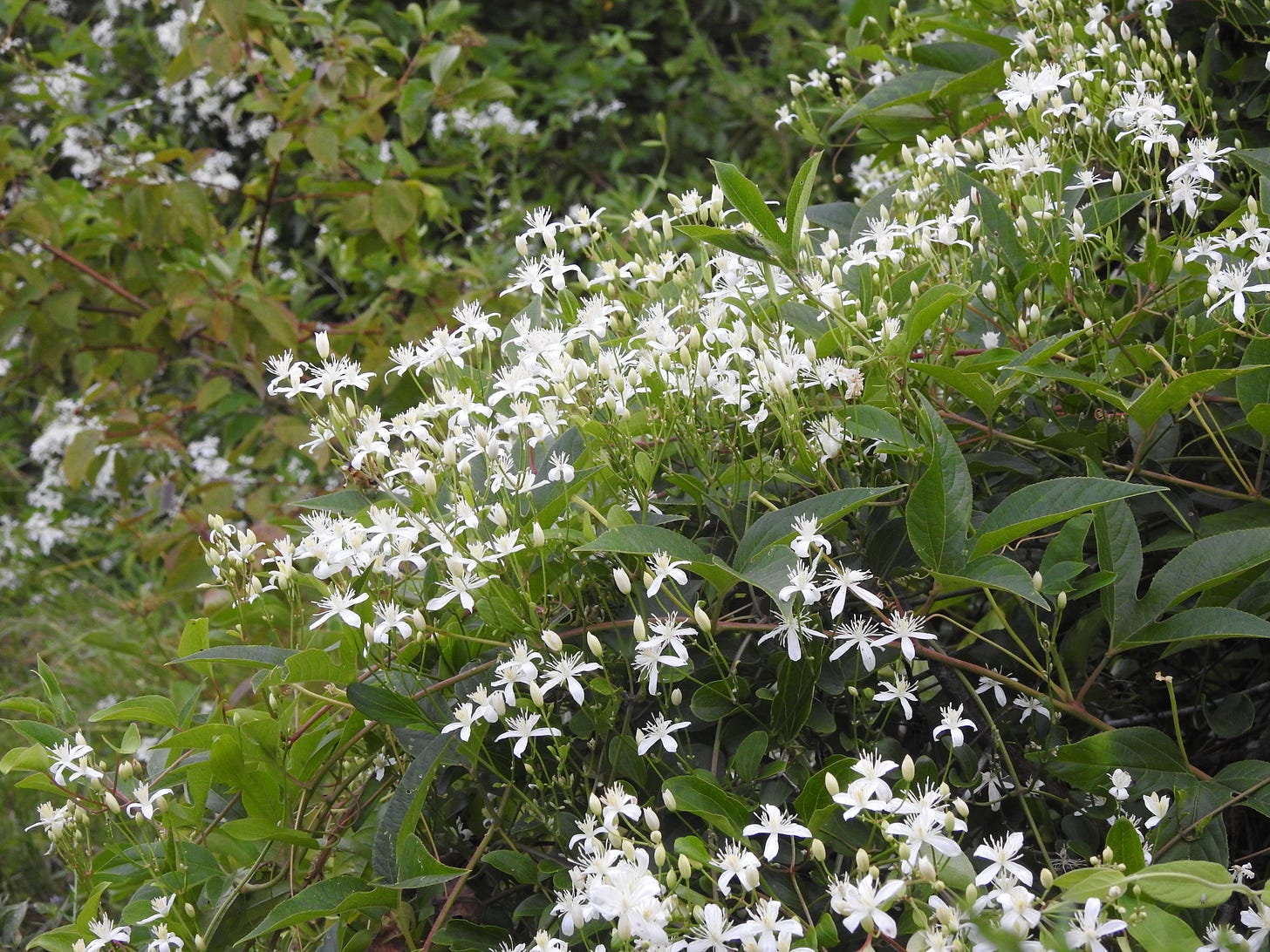


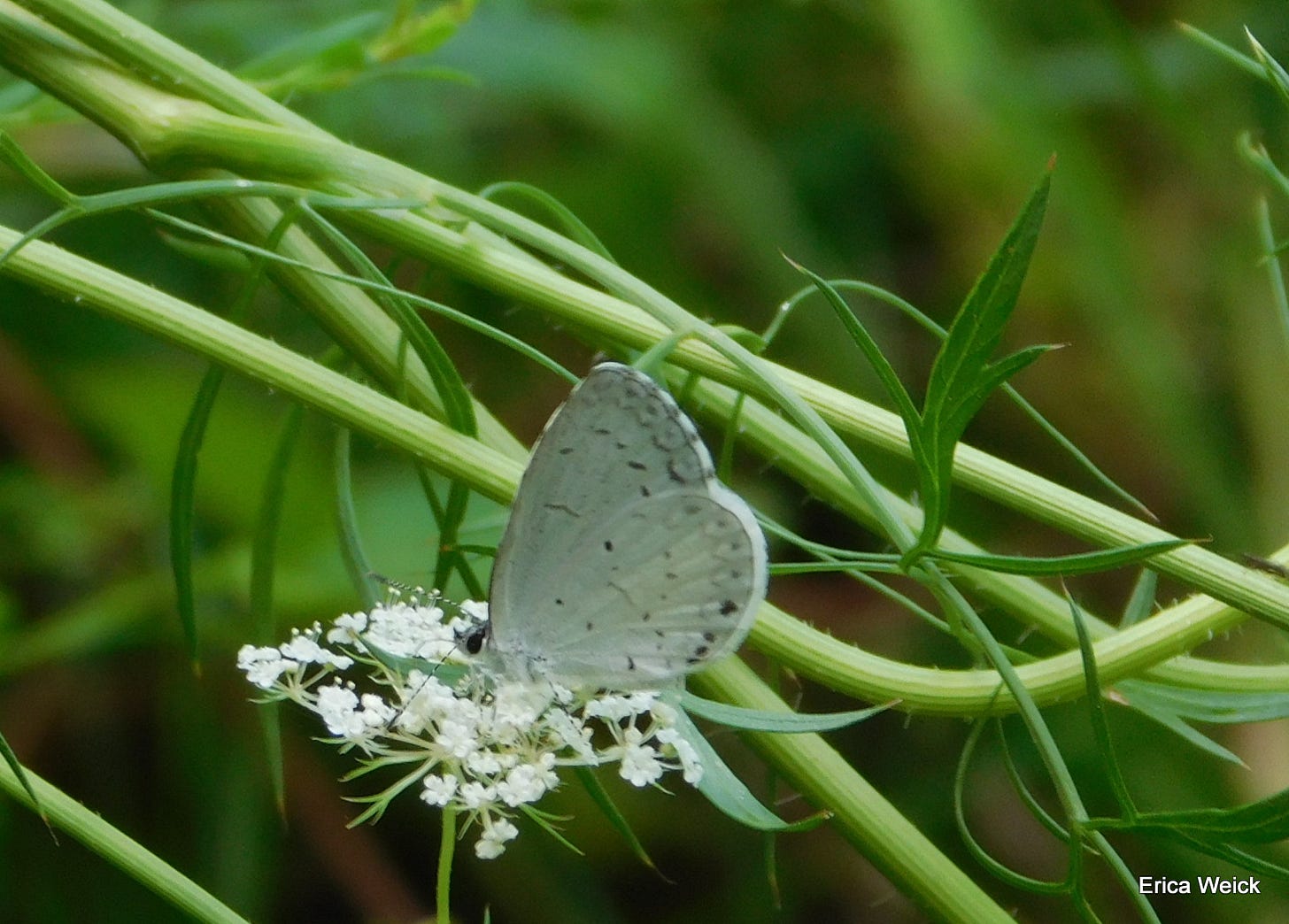

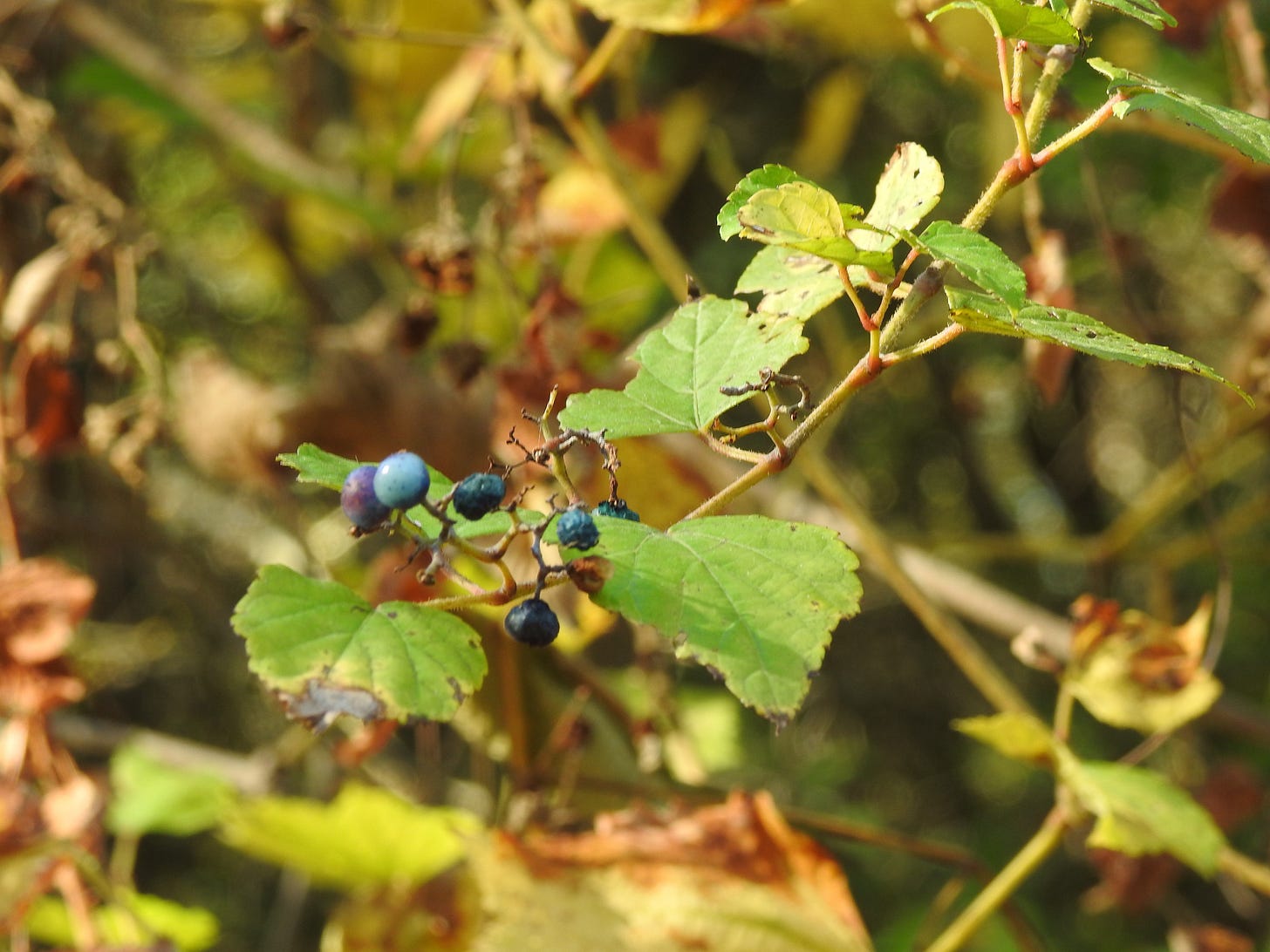
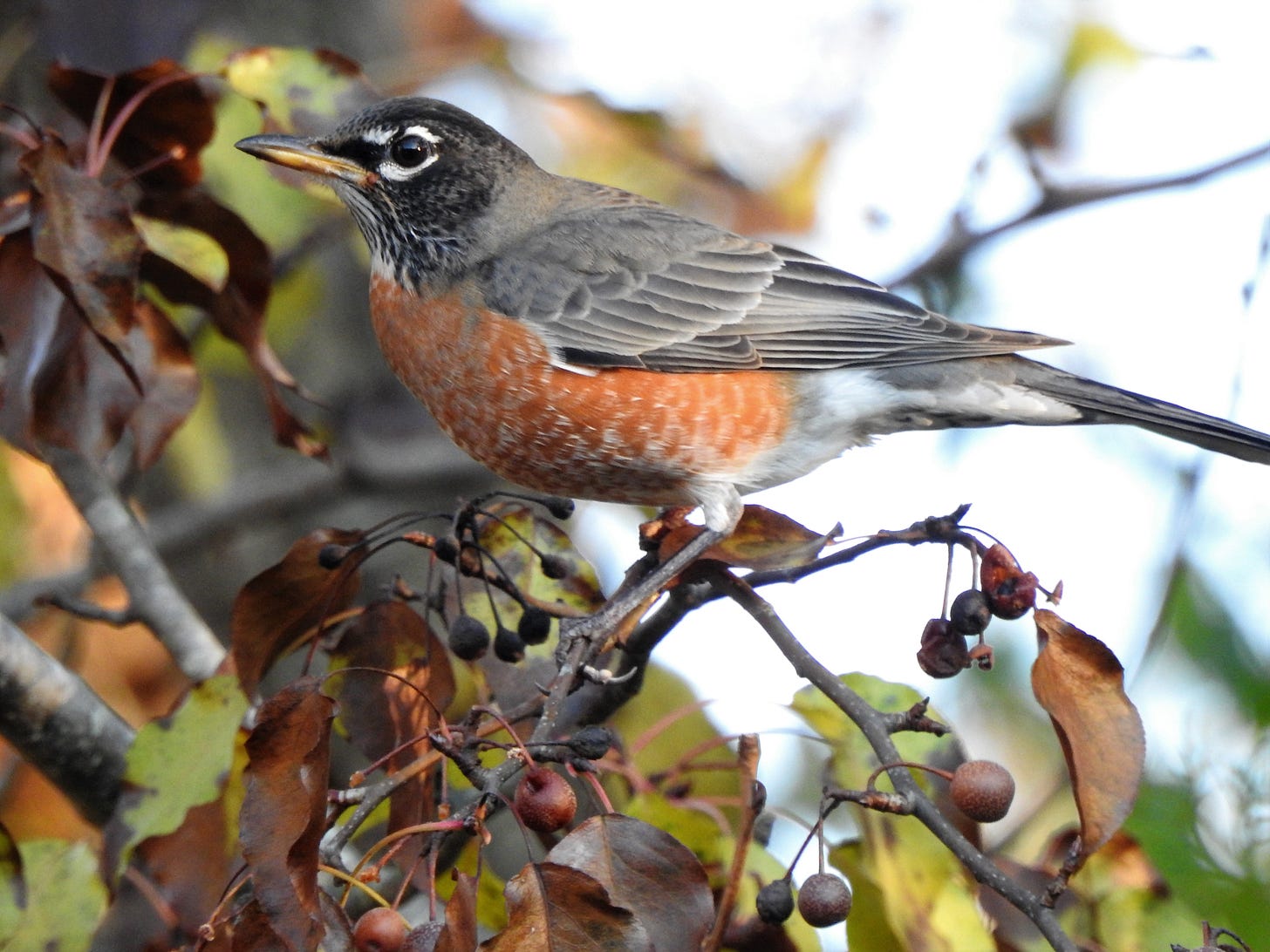

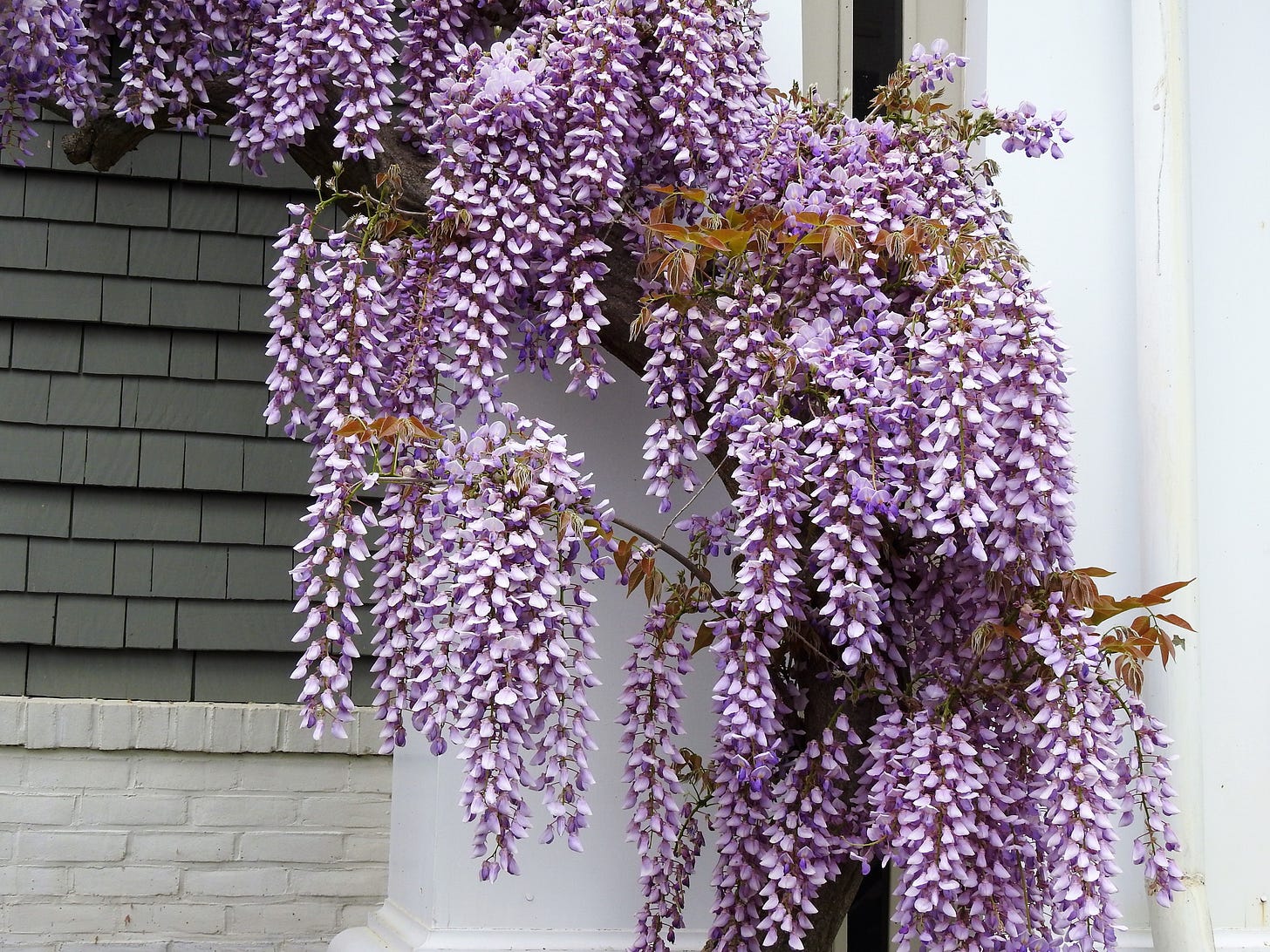

I love this, again awe.
All of this resonates with me, Erica. I'm struck time and again with how it is only humans determining whether or not another living being "belongs." No doubt we have sped up what might have occurred naturally, but if humans weren't also responsible for the degradation and demise of so many species, perhaps the plants and animals that move from wherever they originate to wherever they land would find their own balance with ease.
Photos are stunning, and how did you find that delightful video at the end?
"The principles of shamanism are similar, I think, where the shaman enters the unknown space and communes with the sometimes scary mirror images." Mmmhmm.